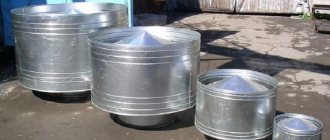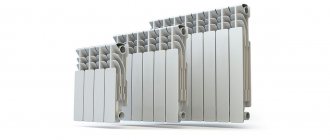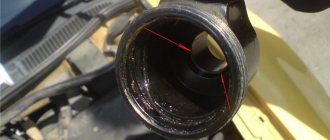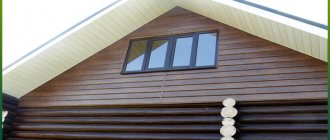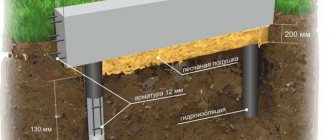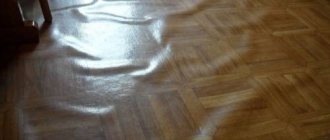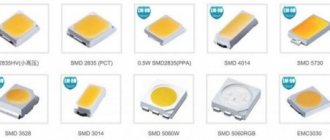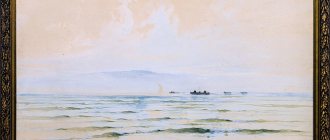What it is?
A fitting is a type of threaded adapter (fitting) that is used to connect parts with a circular cross-section and to move from one thread to another. In appearance it resembles a cylinder with a through threaded hole and threads on the outer surface. The diameter of the external thread is usually larger than the internal thread, but there are also reverse threads. The internal thread of the fitting is usually called a nut, and the external thread is called a fitting.
External and internal threads can be of the same type and differ only in diameter, or they can be of different types (for example, internal metric, external inch).
Such a connection can withstand large mechanical loads, it is quite sealed, it can be disassembled and reassembled an unlimited number of times.
Installing the foot is quite simple and in most cases does not require special skills and tools (you need a hex key or a gas wrench).
Each product, depending on the area of application, can be of different sizes, have its own diameter and thread parameters. Typical characteristics are regulated by GOST, DIN, ISO standards. Non-standard models are also produced.
Futorka - what is it in plumbing and heating, types
One of the most original fasteners used to connect pipes and as radiator plugs is a fitting. This element differs from other fittings and adapters. What is a futorka and what are its key features?
Areas of application
A fitting - what is it: externally, a fitting resembles a piece of pipe or a bolt, along the longitudinal axis of which there is a threaded hole. The external thread is larger and is intended for parts of larger diameter, and the internal thread is smaller and is intended to connect an element of a smaller diameter. Essentially, this is an adapter from one thread to another.
The function of such a connector is to ensure the mating of two parts with different thread sizes. Often, an element with a broken thread is drilled out to a larger diameter; a plumbing or repair fitting with an internal cross-section corresponding to the damaged part is used to connect it.
The use of threaded fittings is in demand in the following areas:
- Plumbing. Used for connecting pipes, plumbing fixtures, radiators with different standard sizes and materials for manufacturing parts (cast iron, bimetallic, aluminum elements). Most used area.
- Furniture manufacture. Used as a nut for fastening various parts, for recessing fittings into the material. Furniture fittings made of metal or plastic without a hex head for an open-end or socket wrench are mounted using a flat-head screwdriver in the appropriate sockets, for example, in blind holes of a smaller diameter. Some fittings are equipped with a ball that expands the chipboard or MDF when the connecting part is screwed in and secures the fitting tightly in the socket.
- Equipment repair. Often used to connect parts with broken threads. For example, to restore spark plugs in a car. They can be made in the form of a spiral repair insert. For each type of technical equipment, there are corresponding repair kits with restoration devices for the most problematic threaded connections.
Consumers appreciated the high reliability and simple design of this adapter. Their use is limited only by the difficulty of finding some types and sizes of fittings in the nearest store. But if there is no suitable radiator fitting in one store, then in another you can definitely find the necessary fitting.
What is futorka
A fitting is one of the types of threaded fittings used to connect parts, pipelines or other elements. Outwardly, it looks like a piece of pipe or a bolt, along the longitudinal axis of which a threaded hole is drilled.
The fitting works as an adapter from one thread to another
The main purpose is to provide a transition from one thread diameter to another.
Sometimes a hole with a broken thread is drilled out to a larger diameter, a new one is cut and a fitting with an internal diameter corresponding to the failed element is installed.
Furniture ones perform the functions of connecting elements for ties or fittings. In this case, the element is used not as an adapter, but as a nut recessed into the material.
Sometimes fittings without an internal hole are classified as fittings.
Where are they used?
They are used in many areas:
- Plumbing. They provide a transition from one thread diameter to another, connecting pipes of different sizes.
- Furniture manufacture. Used as fastening elements for parts or accessories. Furniture fittings do not have a hexagonal head for an open-end or socket wrench, representing a sleeve with external and internal threads. Installed using a flat-head screwdriver or hex key, for which corresponding sockets are made.
- Technique. They are one of the repair options for worn threads. In particular, they are widely used in car repair shops to restore spark plugs.
The simplicity and reliability of this fitting are appreciated by consumers; the only circumstance limiting their use is the absence of certain types or sizes in the immediate vicinity.
Sometimes situations arise when the necessary fitting is not at hand or in stores. Most often these are specific samples used in repair and restoration work. In such cases, you can make the fitting yourself, using a ready-made bolt or making a thread on a rod from a suitable metal, drilling a hole along the longitudinal axis and cutting an internal thread of the required size in it.
Kinds
They may differ in purpose:
- Plumbing. They are divided into corresponding standard sizes of cast iron elements, bimetallic or aluminum parts.
- Furniture. There are metal and plastic elements. They are installed in pre-prepared nests - for example, blind holes of a slightly smaller diameter. The thread is cut by the foot itself during installation, since furniture materials (chipboard or MDF) have a relatively soft structure. Some are equipped with an additional element - a ball, which expands the part when screwing the connecting element and tightly secures the fitting in the socket.
- Repair. They are used in workshops for the repair and restoration of various equipment, including vehicles. There are many types of similar parts - from spiral repair inserts to full-fledged footers of the usual type. For each type of technical device, appropriate repair kits are manufactured, which include restoration elements for the most problematic threaded connections.
Types of footwear may vary in their purpose and the material from which they are made
The material from which they are made can be very different. This depends on the area of application of the element and the magnitude of the loads it will experience.
What can they be made of:
- cast iron;
- brass;
- Cink Steel;
- aluminum;
- plastic (nylon, polypropylene), etc.
It is impossible to compile an exhaustive list of products, since they are often manufactured by separate manufacturers for certain components or parts. However, plumbing fittings are manufactured in accordance with technical standards and GOST requirements, so they can be used with reasonable confidence in efficiency and quality.
Types of footwear and the principle of their operation
Futorki are irreplaceable in cases where it is necessary to secure elements of the heating or sewage system of different sizes. Before purchasing, you should know that footwear also differs in:
- Material of manufacture . This can be cast iron, brass and galvanized steel. The first two types of products are used to connect cast iron components, as they quickly fuse with them into one whole. Steel fittings are chosen for fastening bimetallic components and are more often used when carrying out plumbing work.
- Side diameters . Measured with a ruler or caliper along the inside of the thread.
- Thread location . It can be screwed in either on the left or right side.
You can choose and purchase the right footing only if you know all the technical features of the parts being fastened - for this it is better to take with you the documentation that comes with the equipment. Footers are most often used when fastening plumbing fixtures, but this element is also relevant in the automotive industry, in the production of furniture and is used in the installation of heating systems.
In plumbing, it is sometimes impossible to do without such fasteners when the thread on one side of the pipe is worn out, and replacing the entire element involves significant expenses. In such cases, a new thread is made, onto which the fitting is attached. To avoid leaks, flax is laid, since fum tape may not withstand high pressure and high temperature.
What is futorka
A fitting is one of the types of threaded fittings used to connect parts, pipelines or other elements. Outwardly, it looks like a piece of pipe or a bolt, along the longitudinal axis of which a threaded hole is drilled.
The fitting works as an adapter from one thread to another
The main purpose is to provide a transition from one thread diameter to another.
Sometimes a hole with a broken thread is drilled out to a larger diameter, a new one is cut and a fitting with an internal diameter corresponding to the failed element is installed.
Furniture ones perform the functions of connecting elements for ties or fittings. In this case, the element is used not as an adapter, but as a nut recessed into the material.
Sometimes fittings without an internal hole are classified as fittings.
Where are they used?
They are used in many areas:
- Plumbing. They provide a transition from one thread diameter to another, connecting pipes of different sizes.
- Furniture manufacture. Used as fastening elements for parts or accessories. Furniture fittings do not have a hexagonal head for an open-end or socket wrench, representing a sleeve with external and internal threads. Installed using a flat-head screwdriver or hex key, for which corresponding sockets are made.
- Technique. They are one of the repair options for worn threads. In particular, they are widely used in car repair shops to restore spark plugs.
The simplicity and reliability of this fitting are appreciated by consumers; the only circumstance limiting their use is the absence of certain types or sizes in the immediate vicinity.
Sometimes situations arise when the necessary fitting is not at hand or in stores. Most often these are specific samples used in repair and restoration work. In such cases, you can make the fitting yourself, using a ready-made bolt or making a thread on a rod from a suitable metal, drilling a hole along the longitudinal axis and cutting an internal thread of the required size in it.
Kinds
They may differ in purpose:
- Plumbing. They are divided into corresponding standard sizes of cast iron elements, bimetallic or aluminum parts.
- Furniture. There are metal and plastic elements. They are installed in pre-prepared nests - for example, blind holes of a slightly smaller diameter. The thread is cut by the foot itself during installation, since furniture materials (chipboard or MDF) have a relatively soft structure. Some are equipped with an additional element - a ball, which expands the part when screwing the connecting element and tightly secures the fitting in the socket.
- Repair. They are used in workshops for the repair and restoration of various equipment, including vehicles. There are many types of similar parts - from spiral repair inserts to full-fledged footers of the usual type. For each type of technical device, appropriate repair kits are manufactured, which include restoration elements for the most problematic threaded connections.
Types of footwear may vary in their purpose and the material from which they are made
The material from which they are made can be very different. This depends on the area of application of the element and the magnitude of the loads it will experience.
What can they be made of:
- cast iron;
- brass;
- Cink Steel;
- aluminum;
- plastic (nylon, polypropylene), etc.
It is impossible to compile an exhaustive list of products, since they are often manufactured by separate manufacturers for certain components or parts. However, plumbing fittings are manufactured in accordance with technical standards and GOST requirements, so they can be used with reasonable confidence in efficiency and quality.
Areas of application
- Connections of pipes of different diameters in water supply systems.
- Attaching pegs.
- Replacing damaged threads by drilling. In this case, a hole of a larger diameter is drilled in the workpiece, a new thread is cut, and an adapter is screwed in.
Where are they used?
They are used in many areas:
- Plumbing. They provide a transition from one thread diameter to another, connecting pipes of different sizes.
- Furniture manufacture. Used as fastening elements for parts or accessories. Furniture fittings do not have a hexagonal head for an open-end or socket wrench, representing a sleeve with external and internal threads. Installed using a flat-head screwdriver or hex key, for which corresponding sockets are made.
- Technique. They are one of the repair options for worn threads. In particular, they are widely used in car repair shops to restore spark plugs.
The simplicity and reliability of this fitting are appreciated by consumers; the only circumstance limiting their use is the absence of certain types or sizes in the immediate vicinity.
Sometimes situations arise when the necessary fitting is not at hand or in stores. Most often these are specific samples used in repair and restoration work. In such cases, you can make the fitting yourself, using a ready-made bolt or making a thread on a rod from a suitable metal, drilling a hole along the longitudinal axis and cutting an internal thread of the required size in it.
Application in the furniture industry
No matter how strange it may seem, footwear can also be used in this area. Wide demand in the furniture industry is due to its special design. Since the futorka is a connecting element, which is a threaded part in the form of a bushing with an internal thread, it is most often used as a base for hooks (when installing furniture shelves in wardrobes). In addition, the futorka retains its properties (strength) very well on chipboard panels. That is, in order to ensure reliable fastening, craftsmen first have to drill a hole for the footing, and only then place the hook and shelf on it.
Metal mounting
At a time when you need to assemble a new water supply instead of a dilapidated one, you need to connect the metal to the new pipes. Sometimes it is polypropylene, sometimes it is steel. What needs to be done in order to carry out the installation correctly?
First, you need to turn off all the risers to be replaced and drain the water from them. After this, you need to unscrew the old valves, which are still made of cast iron and are very unreliable. They change to more modern ball ones with a flag. Later, using a plumbing cable, a section of the water supply system is cleared of debris (various deposits and rust). The valve itself (new) and the filter are mounted - it is needed to extend the life of the faucet or bathroom equipment, for example, a washing machine. For sealed seams, linen thread is used, which is wrapped around the thread as the nut rotates. At the end of the filter, the required fitting of the appropriate size is installed, and a polypropylene coupling is attached to its other end. After this, the new pipeline is entirely planned.
Purpose
The connecting product, due to its design feature, is an important element in assembling and repairing furniture. The furniture fitting is a fitting with a metric internal thread and an external screw thread. Widely used when installing shelves in cabinet and kitchen furniture, as a base for hooks.
The part is well suited for connecting complex planes, especially with rectangular end joints, for assembling and disassembling furniture made of chipboard, MDF and soft wood. The part, providing reliable fastening, is quite technologically advanced, has the correct thread pitch, diameter size, low degree of surface roughness, and tightness.
The main service purpose of the part is screwing or driving into a prepared hole on the surface. The hardware, coinciding with the passage in diameter and thread, ensures an accurate, strong connection and does not allow gaps and distortions between fastener elements. The product, even with an increase in the contact area, can withstand the load well.
The product is technologically advanced in its design features: it effectively reduces time costs and contributes to the quality of furniture manufacturing and repair. To improve anti-corrosion resistance, parts are coated with chrome or zinc.
The service life of all furniture depends on the quality of the product. A thread or diameter discrepancy even by a millimeter can cause a malfunction of sliding, retractable, or transforming parts.
Futorka - what is it: where is it used?
A futor is an object that is specially made for creating transitions; it is characterized by internal and external threads. Very often the diameter of this object differs; if we speak in plumbing language, then these objects have their own names depending on the diameter. For example, the outer side is called a fitting, and the inner side is called a nut. The indicators of this item are measured in millimeters or inches, whichever is more convenient for you.
As for application, there are 3 main areas:
- Used to create connections between pipes of different diameters in water supply;
- For attaching pegs;
- To replace damaged threads by drilling.
The futor is made from stainless steel. It is thanks to this that this item is resistant to corrosion and has increased strength. We can say that the futorka is the most durable connecting part, because it never becomes covered with rust.
Futorka what is it: 3 areas of application
The most common part when installing a heating and water system is the lining. Repair work in a house includes a large number of processes, changes and alterations, as well as upgrades. An important part of the renovation is the installation of the heating and water systems. The safety in the house will depend on how successful the result is. Each system includes a large number of components, such as a lock nut, nipple, squeegee, coupling, but the most common is the fitting.
A futor is an object that is specially made for creating transitions; it is characterized by internal and external threads. Very often the diameter of this object differs; if we speak in plumbing language, then these objects have their own names depending on the diameter. For example, the outer side is called a fitting, and the inner side is called a nut. The indicators of this item are measured in millimeters or inches, whichever is more convenient for you.
As for application, there are 3 main areas:
- Used to create connections between pipes of different diameters in water supply;
- For attaching pegs;
- To replace damaged threads by drilling.
The futor is made from stainless steel. It is thanks to this that this item is resistant to corrosion and has increased strength. We can say that the futorka is the most durable connecting part, because it never becomes covered with rust.
What is a futorka: 2 classes of application
Based on where the futorka will be used, it can be divided into several classes. For use in cast iron and for creating an adapter on bimetallic and aluminum objects.
Futorki, depending on where they are used, are of the first and second class
The first class has the following characteristics:
- Items that are used to create a connection between a cast iron battery and a pipeline and shut-off valves;
- They have a low pricing policy, but despite this they treat the material with high reliability;
- Connection through such a fitting can be made from any side thanks to a special thread.
Based on these characteristics, we can say that the first class includes those subjects that are able to cope with tasks beyond the control of other settings.
The second group is defined by the following indicators:
- Parts are made of the strongest galvanized steel, which provides an increased level of reliability;
- All elements are coated with powder-type enamel; it is capable of imparting strength and resistance to change;
- On sale you can find both left-handed and right-handed threads.
- For comfortable use, manufacturers produce kits that contain several fittings, gaskets, a plug, a tap and a key that will make the installation process more comfortable.
The choice of footer and its class will depend on the type of work planned, however, experts are increasingly giving preference to the second type.
How to choose a futorka: photo
Absolutely any purchase will be based on some rules and criteria. They are available when purchasing footwear.
Experts identify the following requirements when purchasing:
- Dimensions. If you do not know the parameters of the equipment, then the purchase will not lead to a positive result.
- Despite the fact that manufacturers currently produce kits with different diameters, knowing the thread diameter is very important. This will eliminate possible mismatches. The instructions for the equipment can help you choose.
- Determine whether the product is of high quality. If the fitting is good, then the thread will eliminate visible damage. In addition, everything must be processed. The surface must be smooth.
The most important thing is quality control. When purchasing a part, you need to check it in practice; to do this, just screw the item onto a double thread. If you do not feel resistance, this indicates the quality of the product.
Features of choice: liner for cast iron radiator
The radiator threaded fitting is ideal for cast iron type batteries and will also find its application in plumbing, it is a kind of flange that will eliminate any shifts. This application can bring any plumbing installations into perfect condition, as evidenced by the photo.
Radiator threaded fitting for cast iron battery
First, you need to consider the criteria that you should pay attention to when purchasing a set of footers. These criteria apply not only to footers, but also to other necessary elements.
Here are some of the criteria:
- Is the size appropriate? As has already been said, if you do not know the parameters of your equipment, then you will not be able to buy the correct components; it is better to take the documents for the radiators with you so that the consultant can select the necessary part.
- Make a plan for your heating system. This detail is much more important than it seems at first glance. The most important thing is to clearly define where the system nodes are located. This calculation will make it possible to purchase the exact number of components.
- Quality of material. For an aluminum or bimetallic radiator, you can choose a white product, since installations are most often painted in this color. But pay attention to how smooth and high-quality the surfaces are.
- The material from which the futorka is made. For cast iron radiators, the liners must be made of the same material as the main part. Also, the optimal solution would be to purchase a galvanized steel liner. They are durable and reliable. The price for all these qualities is acceptable.
- Take some time to check. As mentioned above, you can check by screwing the element onto the thread. If you purchase a large amount of material, try to check at least a few feet. The winding should be easy and you should not use much force. If you notice interference, this means that the thread has been damaged.
Futorka, pros and cons!
As soon as I bought a truck with footers, although they weren’t a hassle, they were still annoying. Everyone constantly advised to get rid of them. They offered to install studs from Kamaz, etc. Until yesterday, I thought that futorki were g... and that the Japs were stupid here, and AS ALWAYS, I once again realized that I was mistaken. Yesterday I watched a video: a car with a recorder overtook a truck (like Merin or Tata, it’s hard to make out) he moved away so quickly, then 1 wheel flew off, after a while the second, naturally, the truck was in the trash. At first I noticed that the hub flew off, etc. Then this European car arrived, and it didn’t have any footwear. So what do the Japs do for the PEOPLE!!! Trucks even reach me with 2-footers (wow, our vulcanizers are trying to accommodate everything). So the Futorki brothers, although boring, are useful.
Last edited by agrokrai; 11/13/2013 at 20:08.
dismantling-trucks, buses: Japanese, Koreans, Chinese www.disassembly of Japanese trucks.rf
Radiator piping
The sectional radiator itself is a “semi-finished product” that cannot be connected to the system.
Especially considering that it has a right-hand thread on one side and a left-hand thread on the other. This feature is dictated by the way individual sections are connected into a battery through a nipple, which has two sections with multidirectional threads and a gasket between them. To connect the battery to the system, you need special fittings (futures) and plugs.
The minimum set of additional elements for connecting a cast iron battery includes two fittings and two plugs. Depending on the characteristics of the heating system and the side from which the connections are fitted, the external thread of the plugs and fittings can be left-handed or right-handed. And the internal thread of footwear is always right-handed.
If a cast-iron battery needs to be equipped with a Mayevsky valve or an automatic radiator air vent, then instead of the top plug, another fitting is screwed in.
For aluminum and bimetallic radiators, they sell ready-made kits that consist of four fittings (in pairs with left and right external threads), one plug to match the size of the internal thread of the fitting and one Mayevsky tap (plus a key for it).
Of course, a Mayevsky tap or an automatic air vent is optional, but they make it possible to release the air lock that has formed in the battery.
Another recommended piping element for the central heating system battery is ball valves for supply and return. They make it possible to repair or replace the battery without stopping the system if a leak appears in it, as well as increase the number of sections if there is insufficient thermal power to heat the room.
For an autonomous heating system, instead of a ball valve for the supply, it is better to install a manual or automatic thermostat.
Taps and thermostats are connected to the battery through an “American” connection, and the method of connecting them to the supply line depends on the material of the pipes.
Basic principles for selecting components
Any purchase is based on certain criteria. This does not exclude components for assembling heating systems.
The following series of requirements are identified that apply to such elements, including footers:
- Size – lack of information about the parameters of the equipment for which you need to purchase components will not give a positive result. For example, if the part differs by even one inch, then such a connection will not be reliable. This may cause leakage. If it is customary to install the system on your own, but there is no experience in this matter, then it is recommended to take documentation with you to the store, for example, for radiators or other previously purchased equipment. This will not only make it easier for the sales consultant to find the necessary parts, but will also help the buyer himself understand this matter.
- Heating system plan - having a sketch will allow you to determine the location of all important components, as well as their number. Of particular importance when selecting components is their location relative to each other. Such a drawing will allow you to identify important points, as well as emphasize individual problem areas.
- Thread – you need to select the fitting to match other parts with the appropriate parameters. An inch of error will result in the inability to connect such parts. Despite the fact that manufacturers produce components of certain standards, in order to eliminate possible mismatches, experts recommend familiarizing yourself with the features of the parts in advance. The instructions supplied with the equipment will help with this.
- Product quality – you can evaluate components according to this parameter visually. If the part is of good quality, then the thread, regardless of whether it is outside or inside, should be smooth without any damage. This also applies to other surfaces. They, in turn, must also be well processed.
- Material – you need to buy parts based on information about the equipment itself for which the components are selected. So, for a cast iron radiator you need to take a cast iron threaded fitting. But for bimetallic and aluminum products, the best option would be an item made of galvanized steel.
- Checking the elements - when making a purchase, you should definitely check the part in practice. You just need to screw the component onto the double thread. If this is done easily and without unnecessary resistance, then the part is good. Otherwise, the thread is damaged and purchasing this product is not advisable.
Advice from the editors: it is recommended to purchase parts and equipment from one company or complete the set in a store. The seller will not only select the necessary elements, but will also save time.
Thus, a footer is an indispensable item when installing a heating or other system.
Futorka is a nut or sleeve that is used for pipe connections of various diameters.
Thanks to this device, the heating system can be installed easily and without problems, despite large differences in pipe sizes. Before starting installation work, it is recommended that you familiarize yourself with all possible options for connecting the main elements of the system
This is important because the diameter of individual pipeline elements and all connections may differ
Watch the video, which discusses the features of fittings for plumbing:
How to choose the right wallpaper depending on the type of room
You need to choose one or another type of wallpaper based on the room in which it will be hung.
For a bedroom, living room or nursery, you can choose any type of wallpaper at your discretion. Unless for the bedroom and nursery it is recommended to choose canvases made from natural materials. Kitchen and bathroom – rooms with high humidity levels
Therefore, when choosing wallpaper, you need to pay attention to moisture-resistant models. Corridor. Outerwear (sometimes after rain) or dirty shoes are often left in the hallway
Dust or dirt from jackets and boots can get onto the wallpaper - so choose a canvas that can be wet cleaned.
Let's take a closer look at which rooms the above materials are suitable for:
| Types of wallpaper | Bedroom | Living room | Children's | Kitchen | Bathroom | Corridor |
| Paper | Allowed | Allowed | Allowed | Not recommended | Forbidden | Not recommended |
| Non-woven | Allowed | Allowed | Allowed | Allowed | Allowed | Allowed |
| Vinyl | Allowed | Allowed | Forbidden | Allowed | Allowed | Allowed |
| Textile | Allowed | Allowed | Allowed | Not recommended | Forbidden | Allowed |
| Glass wallpaper | Allowed | Allowed | Allowed | Allowed | Allowed | Allowed |
| Liquid | Allowed | Allowed | Allowed | Forbidden | Forbidden | Allowed |
| Bamboo | Allowed | Allowed | Allowed | Allowed | Not recommended | Allowed |
| Photo wallpaper | Allowed | Allowed | Allowed | Allowed | Allowed | Allowed |
Materials
Futorki come in plastic and metal. Plastic footers of small sizes are used for furniture fastenings. They are lighter in weight, more resilient than metal ones, and are not subject to corrosion. Where the weight of the fastening itself is critical or where rigid metal hardware cannot be used due to the specifics of the material (thin sheet of chipboard, plywood), such parts turn out to be indispensable. Some plumbing fittings are also made from plastic, which are used in the installation of household plumbing systems.
In particular, fittings for aluminum heating radiators are made of polypropylene - such an adapter prevents the formation of a galvanic couple between the radiator and the steel pipe.
For critical connections that must withstand high mechanical loads, be exposed to high temperatures, pressure, and aggressive environments, only metal fittings are used. They are made of cast iron, steel, copper, brass, and sometimes bronze.
- Cast iron liners are used for cast iron radiators and pipes; they can withstand pressures of up to 25 Bar and temperatures of up to 175 degrees.
- Brass fitting is a good connector for household and most industrial engineering systems. This material is durable, chemically inert, and safe. But in strength, brass is inferior to cast iron and is used for systems with a working pressure of no more than 16 bar.
- Steel – made of high-strength, corrosion-resistant carbon steel, additionally coated with a protective zinc or nickel coating. They are suitable for aggressive environments and can withstand high mechanical loads, pressures up to 16 Bar and temperatures up to 110 degrees. Such fittings are used for critical connections in industrial and engineering pipelines. Small-sized fittings for creating reliable connections (furniture, spring inserts) are also made of stainless steel.
Using a fitting to connect plumbing fixtures
Many people have a question about futorka - what is it? A fitting is a type of fitting in the form of a nut or bushing with external and internal threads. Most often, such an adapter is used in plumbing systems to connect pipelines with different diameter parts, but this fitting is very common in other areas. “Plumber Portal” will tell you how and why the futorka is used, a photo of which you have probably already seen, but did not know what kind of detail it was.
- Areas of application
- Main varieties
- Criterias of choice
Areas of application
A fitting - what is it: externally, a fitting resembles a piece of pipe or a bolt, along the longitudinal axis of which there is a threaded hole. The external thread is larger and is intended for parts of larger diameter, and the internal thread is smaller and is intended to connect an element of a smaller diameter. Essentially, this is an adapter from one thread to another.
The function of such a connector is to ensure the mating of two parts with different thread sizes. Often, an element with a broken thread is drilled out to a larger diameter; a plumbing or repair fitting with an internal cross-section corresponding to the damaged part is used to connect it.
The use of threaded fittings is in demand in the following areas:
- Plumbing. Used for connecting pipes, plumbing fixtures, radiators with different standard sizes and materials for manufacturing parts (cast iron, bimetallic, aluminum elements). Most used area.
- Furniture manufacture. Used as a nut for fastening various parts, for recessing fittings into the material. Furniture fittings made of metal or plastic without a hex head for an open-end or socket wrench are mounted using a flat-head screwdriver in the appropriate sockets, for example, in blind holes of a smaller diameter. Some fittings are equipped with a ball that expands the chipboard or MDF when the connecting part is screwed in and secures the fitting tightly in the socket.
- Equipment repair. Often used to connect parts with broken threads. For example, to restore spark plugs in a car. They can be made in the form of a spiral repair insert. For each type of technical equipment, there are corresponding repair kits with restoration devices for the most problematic threaded connections.
Consumers appreciated the high reliability and simple design of this adapter. Their use is limited only by the difficulty of finding some types and sizes of fittings in the nearest store. But if there is no suitable radiator fitting in one store, then in another you can definitely find the necessary fitting.
Main varieties
Plumbing fittings, in turn, are divided into two groups.
Adapters of the first group are used for installation in cast iron pipelines, heating radiators or plumbing fixtures. Their advantages:
- relatively low price;
- withstand pressure up to 25 Bar and temperature up to 300 °C;
- possibility of contact with hot water, steam, oil;
- availability of parts with right and left threads.
Fittings of the second group are intended for aluminum or bimetallic connections. Usually made of galvanized steel and have the following advantages:
- corrosion resistance;
- withstand pressure up to 16 Bar and temperature up to 110 °C;
- installed with special tools that do not damage the pipeline or radiator;
- the presence of a special powder enamel coating.
Futorki differ in purpose, depending on the scope of use: plumbing, furniture and repair .
The material from which the adapter is made also depends on the area of use and the amount of load it will experience. Main materials of manufacture:
- cast iron;
- Cink Steel;
- brass;
- aluminum;
- plastic.
It is impossible to compile an exhaustive list of all types of these fittings, since they are produced by individual manufacturers for certain units or parts. However, all adapters are produced in accordance with technical standards and GOST requirements, so that a part, for example, with a cross-section of ½ or ¼, exactly matches the thread of a pipe or radiator.
Criterias of choice
The fittings are selected depending on the cross-section and material of the products being connected. A special table will help you determine the appropriate diameter parameters. The diameter of the thread depends on its pitch and the number of threads per inch.
Fittings for cast iron system elements are highly durable and can withstand high loads. Products of the second group are used in milder conditions, which should be taken into account when choosing a suitable connector.
When purchasing, carefully inspect the adapters, being careful not to miss mechanical damage, cracks or other surface defects. It’s great if you can try to attach the fitting to a part with a suitable thread. The connection should be made easily, without tension and over the entire length of the thread. Otherwise, it is better to choose another sample or type of fitting.
Sometimes situations arise when the necessary adapter could not be found in the store. Usually these are specific samples for repair and restoration work. In this case, you can make a futor with your own hands from a bolt and a rod of suitable metal by drilling a hole along the longitudinal axis and cutting an internal thread of the required size in it.
Thus, the futorka allows you to solve the problem of connecting parts with different sections without the use of welding or complex technical devices. Even an unprepared consumer can buy and install such a fitting. The main thing is to choose the right product in terms of thread and size. If no mistakes are made, the installed fitting can last for many years without hassle.
Source: https://SantehnikPortal.ru/trubi/futorka.html
Problems and solutions
Dripping water and puddles on the floor mean that the integrity of the pipeline has been depressurized at the joints. There are several typical problems and ways to solve them:
- Leaking locknuts at water supply connections. Usually the reason is unsuitable winding.
- Heating radiator lock nut is leaking. Leaks occur due to displacement of the heating battery at the point of connection to the heating line. The problem can be solved by additional winding of the locknut or restoration of the fitting with damaged threads.
- Leakage thread length. This occurs due to too thin pipe walls or destruction of the anti-corrosion coating on the outer surface of the fitting. The defect that has arisen is eliminated by replacing the fitting.

